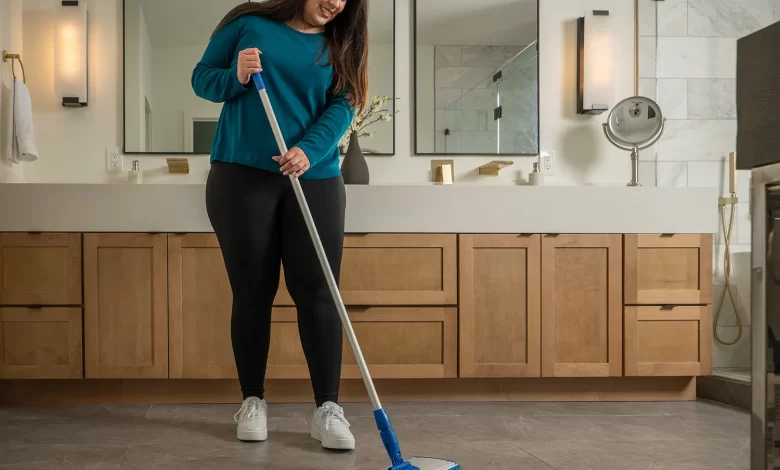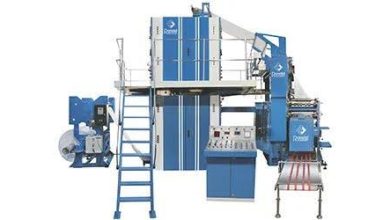Are Your Hard Floors Looking Lackluster? Find Out How To Mop Like A Pro!

Having pristine hard floors can significantly enhance the aesthetics of your home, providing a polished, clean look. However, maintaining this cleanliness requires more than just a quick sweep. Effective mopping is an art and science, ensuring that your floors look good and are free from harmful germs and dirt. For those who don’t have the time or expertise to tackle this task themselves, there are many reputable seattle home cleaners available who can provide professional mopping services. This comprehensive guide will delve into the secrets of professional mopping, ensuring your hard floors are spotless and gleaming.
Understanding Your Floor Type
Before you begin mopping, you must understand the type of hard floor you have. Different materials require different cleaning methods and solutions to avoid damage and maintain integrity. This is especially important if you’re considering hiring a seattle house cleaning service, as you’ll want to ensure they use the appropriate cleaning methods for your specific floors.
Hardwood Floors
Hardwood floors are known for their elegance and warmth but can be quite sensitive to moisture and harsh chemicals. When mopping hardwood floors, it’s essential to use a damp mop rather than a wet one to prevent water from seeping into the wood and causing warping.
Pro Tip: Always use a pH-neutral cleaner specifically designed for hardwood floors. Avoid using vinegar or ammonia-based solutions, as they dull the finish over time.
Laminate Floors
Laminate floors mimic the look of hardwood but are generally more affordable and durable. However, they are also susceptible to water damage. Mopping laminate floors requires using a barely damp mop and avoiding excessive water.
Pro Tip: Use a microfiber mop for laminate floors. It picks up dust and dirt effectively without scratching the surface.
Tile and Stone Floors
Tile and stone floors are sturdy and can handle more vigorous cleaning methods. However, the grout lines between tiles can harbor dirt and bacteria, requiring special attention.
Pro Tip: Use a steam mop on tile and stone floors for a deep clean that sanitizes the surface. Ensure the steam setting is appropriate for your specific type of stone to avoid damage.
Vinyl Floors
Vinyl floors are versatile and water-resistant, making them relatively easy to clean. However, harsh chemicals can damage the finish, so it’s best to use mild cleaners.
Pro Tip: A mixture of warm water and a few drops of dish soap is often sufficient for vinyl floors. Rinse with clean water to avoid residue buildup.
The Right Tools for the Job
Using the right tools can make a significant difference in the effectiveness and efficiency of your mopping routine. Here are some essential tools and how to use them properly.
Microfiber Mops
Microfiber mops are a favorite among cleaning professionals for their ability to trap dirt and dust. These mops are also gentle on floors, making them suitable for various surfaces.
Pro Tip: Wash microfiber mop heads separately from other laundry to prevent them from picking up lint and losing effectiveness.
Sponge Mops
Sponge mops are excellent for absorbing spills and can be used on various hard floor types. However, microfiber mops can be less effective at picking up fine dust and dirt.
Pro Tip: Rinse the sponge head thoroughly to prevent bacteria buildup after each use.
Steam Mops
Steam mops use hot steam to sanitize and clean floors without chemicals. They are particularly effective on tile and stone floors but can also be used on sealed hardwood and laminate.
Pro Tip: Always check the manufacturer’s guidelines for your flooring type before using a steam mop to ensure it is safe.
Bucket and Wringer
A good bucket with a wringer is essential for wringing out excess water from your mop. This is especially important for hardwood and laminate floors, where too much water can cause damage.
Pro Tip: Change the water frequently while mopping to avoid spreading dirt around rather than removing it.
Mopping Techniques for Sparkling Floors
Proper mopping techniques can transform your floors from dull and dirty to sparkling clean. Here are the steps and tips for effective mopping.
Preparation is Key
Before you start mopping, preparing the area and your tools is crucial. This ensures the mopping process is efficient and thorough.
1. Vacuum or Sweep First: Remove loose dirt, dust, and debris by vacuuming or sweeping. This prevents scratching and makes mopping more effective.
2. Clear the Area: Move furniture and any obstacles to ensure you can mop every inch of the floor.
Pro Tip: Use a soft-bristle broom or a vacuum with a hard floor attachment to avoid scratching the surface.
Mopping the Right Way
Once the area is prepared, it’s time to start mopping. Follow these steps for the best results:
1. Dip and Wring: Dip your mop into the cleaning solution and wring out excess water. The mop should be damp, not soaking wet.
2. Mop in Sections: Work in small sections, starting from one corner and working your way out. This ensures you get all the spots.
3. Use an S-shaped Pattern: Mop in an S-shaped pattern to cover more area and pick up dirt effectively. Avoid mopping in a straight line, which can push dirt around rather than picking it up.
4. Rinse and Repeat: Rinse your mop frequently in the bucket to avoid spreading dirt. Change the water if it becomes too dirty.
Pro Tip: Inspect the area twice for high-traffic areas to ensure a thorough clean. The first pass removes surface dirt, and the second pass ensures any remaining grime is lifted.
Drying the Floor
After mopping, it’s essential to dry the floor to prevent water spots and streaks. This is particularly important for hardwood and laminate floors.
1. Use a Dry Mop or Towel: Go over the floor with a dry mop or a clean towel to absorb excess moisture.
2. Allow Air Drying: Ensure good ventilation in the room to allow the floor to air dry completely. Open windows or use fans if necessary.
Pro Tip: Place fans strategically in the room to promote faster drying, especially in humid environments.
Choosing the Right Cleaning Solutions
The cleaning solution you use can make a significant difference in the cleanliness and longevity of your floors. Here are some tips for choosing the right solutions for different floor types.
Homemade vs. Commercial Cleaners
Both homemade and commercial cleaners have their pros and cons. Understanding these can help you make the best choice for your needs.
Homemade Cleaners:
· Pros: Cost-effective, environmentally friendly, and customizable.
· Cons: It may be less effective for tough stains or high-traffic areas.
Commercial Cleaners:
· Pros: Specifically formulated for different floor types, it is often more effective at removing stains and grime.
· Cons: It can be more expensive and may contain harsh chemicals.
Pro Tip: Test any new cleaner on a small, inconspicuous area of your floor first to ensure it does not cause damage or discoloration.
Recommended Cleaning Solutions
Here are some recommended cleaning solutions for different floor types:
1. Hardwood Floors: Use a pH-neutral cleaner designed for hardwood. Avoid vinegar and water mixtures, as they can dull the finish.
2. Laminate Floors: A mixture of water and a few drops of mild dish soap works well. Avoid using too much water.
3. Tile and Stone Floors: A mixture of warm water and a few drops of mild detergent is effective. For tough grout stains, use a mix of baking soda and water.
4. Vinyl Floors: A mixture of warm water and a few drops of dish soap is usually sufficient. Avoid using abrasive cleaners.
Pro Tip: Add a few drops of essential oil to your cleaning solution for a fresh scent. Lemon, lavender, and tea tree oils have natural disinfectant properties.
Maintaining Your Floors Between Mopping
Regular maintenance can extend the time between mopping sessions and keep your floors looking their best. Here are some tips for maintaining different types of hard floors.
Daily and Weekly Cleaning
In addition to mopping, daily and weekly cleaning routines can help maintain your floors.
1. Daily Dusting: Use a dry mop or microfiber cloth to remove dust and dirt daily. This prevents buildup and reduces the need for frequent mopping.
2. Weekly Vacuuming: Vacuum your floors weekly to remove dirt and debris from hard-to-reach areas.
Pro Tip: Use a vacuum with a hard floor attachment to avoid scratching the surface.
Spot Cleaning Spills and Stains
Address spills and stains promptly to prevent damage and maintain the appearance of your floors.
1. Blot, Don’t Rub: Blot the area with a clean cloth to absorb as much liquid as possible for liquid spills. Rubbing can spread the stain.
2. Use Appropriate Cleaners: Use a cleaner suitable for your floor type to treat the stain. Avoid using harsh chemicals that can damage the finish.
Pro Tip: Keep a small spray bottle of your floor cleaner and a microfiber cloth handy for quick spot cleaning.
Protecting Your Floors
Protecting your floors can reduce wear and tear and maintain their appearance.
1. Use Rugs and Mats: Place rugs and mats in high-traffic areas and entryways to reduce dirt and moisture tracked onto your floors.
2. Felt Pads on Furniture: Attach felt pads to the bottom of furniture legs to prevent scratches and scuffs.
Pro Tip: Regularly clean under rugs and mats to prevent dirt and moisture buildup that can damage the floor.
Professional Cleaning Services
Sometimes, even with the best care and maintenance, your floors may require professional attention. Hiring a cleaning service can provide a deep clean that rejuvenates your floors and keeps them looking their best.
Benefits of Professional Cleaning
Professional cleaning services offer several benefits, including:
1. Deep Cleaning: Professionals have the tools and expertise to provide a deep clean that removes dirt and grime that regular mopping can’t reach.
2. Specialized Equipment: Professional cleaners use specialized equipment and cleaning solutions designed for different floor types, ensuring a thorough and safe clean.
3. Time-Saving: Hiring a cleaning service saves you time and effort, allowing you to focus on other tasks.
Pro Tip: Schedule professional cleaning services regularly, such as once or twice a year, to maintain the longevity and appearance of your floors.
Choosing the Right Cleaning Service
When choosing a cleaning service, consider the following factors:
1. Reputation and Reviews: Look for a cleaning service with a good reputation and positive reviews from customers.
2. Experience and Expertise: Choose a service with experience in cleaning your specific type of floor.
3. Eco-Friendly Options: Consider a service that offers eco-friendly cleaning options to reduce environmental impact.
Pro Tip: Ask for recommendations from friends and family or search for “seattle home cleaners” and “seattle house cleaning service” online to find reputable options.
Conclusion
Mopping your hard floors like a pro involves understanding your floor type, using the right tools and techniques, choosing the appropriate cleaning solutions, and maintaining your floors regularly. Following these tips and tricks, you can keep your floors looking pristine and extend their lifespan. And when needed, don’t hesitate to call in the professionals, such as a reliable cleaning service, to give your floors the deep clean they deserve. With these housecleaning secrets unveiled you are well on your way to having spotless, gleaming hard floors that enhance the beauty of your home.




